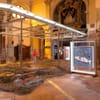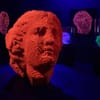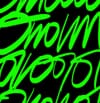From November 1 to 23, 2025, the art-nonprofit Performa Biennial celebrates its 20th anniversary with interdisciplinary artworks spanning several venues in New York City. This year's theme is 'If It Moves: Art and Performance After Cinema,' which examines how performance art was influenced by film through a series of screenings, shows, and discussions at the Performa Hub.
Curator and founding director of Perfoma, RoseLee Goldberg explains that the focus lies on 1920s, when film and sound technologies just emerged. She told Observer:
“I was intrigued by how we can draw inspiration from this early period when film and sound were first being explored, especially in experimental cinema,” Goldberg explains. “It’s interesting to investigate how those early innovations already created new ideas about space, and about the visual and virtual relationships between actors on screen and those in real life.”
She further adds that they always start with the commissioning and a close dialogue with the selected artists to develop the project. She explained that is what Performa distinguishes from typical biennial, emphasizing the artist as the starting point. At times, she added, the organization works for as long as a year and a half to develop a project together.
Among this year's commissioned artists are also some who explore technology as a central theme within their practice. For example, Ayoung Kim, a Seoul-based artist, combines martial arts choreography in the state-of-the-art game engine technology to examine female relationships. Her entire body of work interweaves narratives of geopolitics, technology, and utopian futures with digital and traditional media.
Lithuanians Neringa Černiauskaitė and Ugnius Gelguda from Pakui Hardware will participate with their first performance piece ever, which they describe as an artificial intelligence-led “therapy session structured as a Classical Greek drama.”
Artist Aria Dean presents a multimedia performance reimagining a 1923 Renaissance meeting between Alain Locke and Claude McKay in Berlin's Tiergarten. The work explores the intersections of Black modernist aesthetics and political thought through two characters, the Philosopher and the Poet, debating their ideas.
It uses live film production, real-time projections, and a virtual reconstruction of 1923 Tiergarten to examine the contradictions and limits of realism in relation to Black artistic expression and lived experience.





